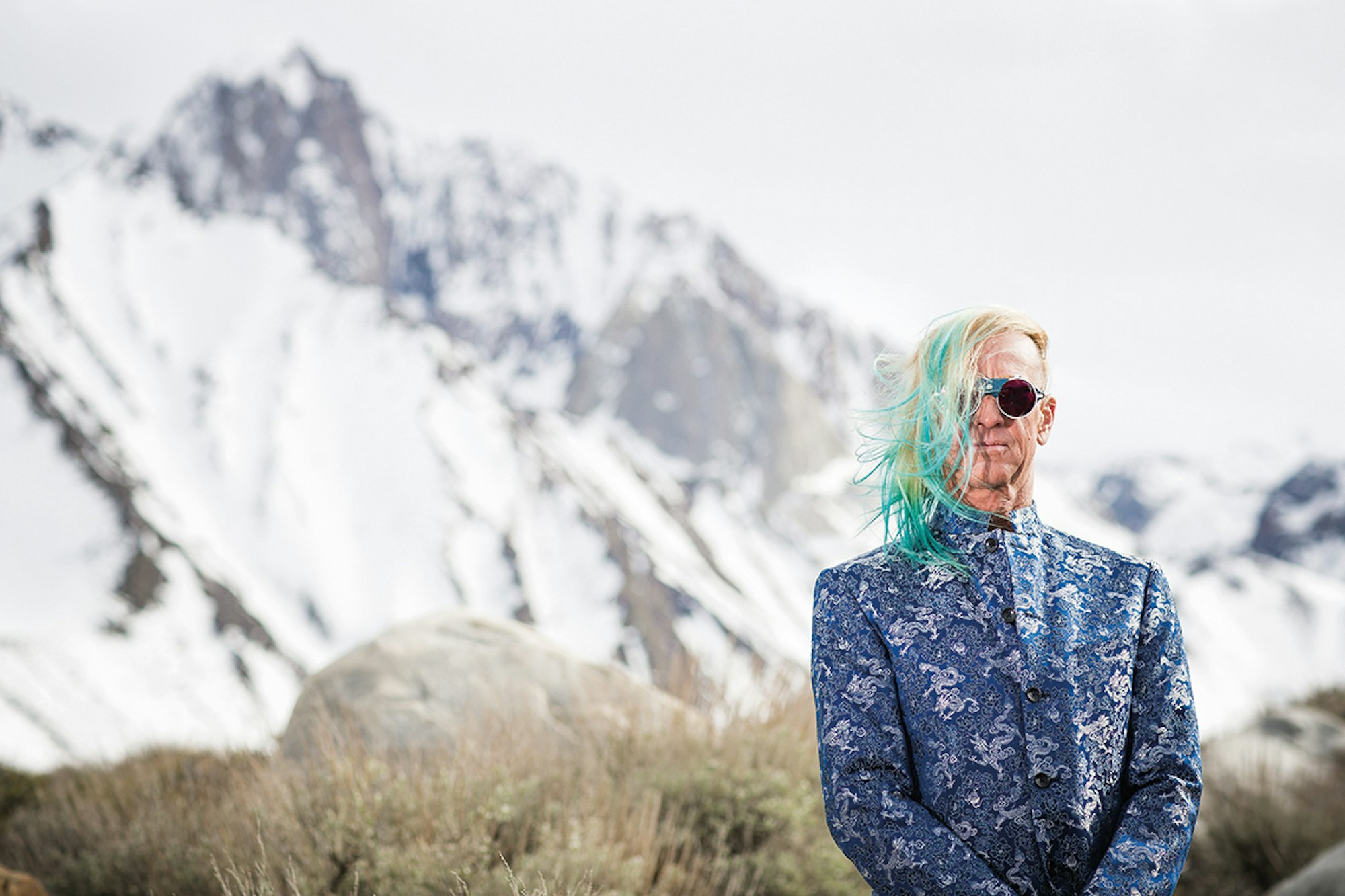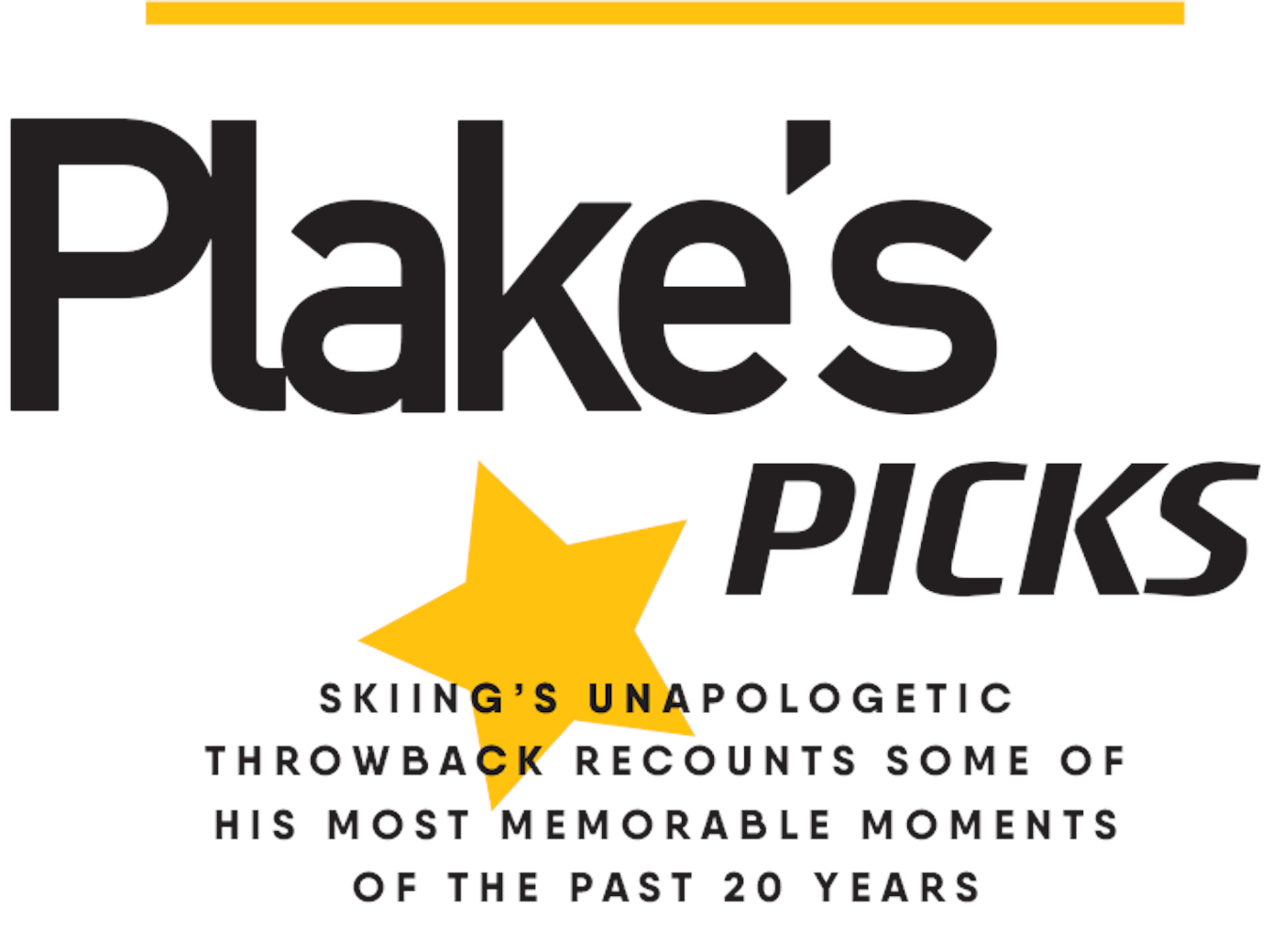
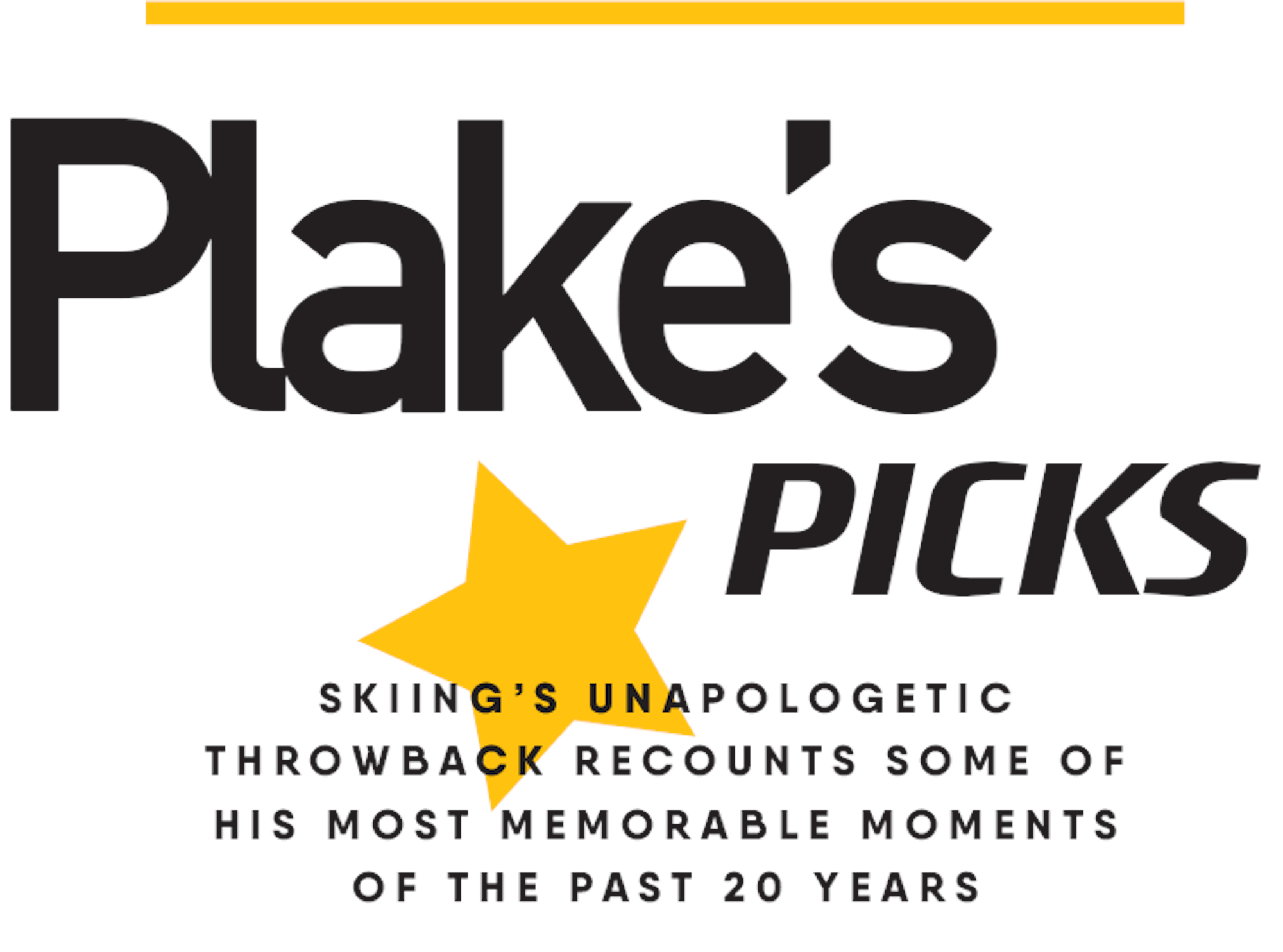
Interview • Derek Taylor
HERE’S A LITTLE KNOWN FACT: Glen Plake thought FREESKIER should have been named Hot Dogger Magazine. His rationale, and I paraphrase: If you broke down in the middle of nowhere, knocked on a stranger’s door and told him you were a hot dog skier, he’d welcome you in. If you said you were a professional freerider, he’d throw you off his land.
The name discrepancy didn’t stop Plake from joining the movement. For the first six years of FREESKIER’s existence, he penned a column called Plake’s Picks, in which he would highlight the next crop of rising stars. A few of the names included in those early issues were JP Auclair, Vincent Dorion, Kristi Leskinen, Anthony Boronowski, Hugo Harrison, Pep Fujas, Sage Cattabriga-Alosa and Henrik Windstedt.
Twenty years down the road and freeskiing has now entered mainstream vernacular, thanks in large part to its Olympic inclusion. Plake, meanwhile, remains undoubtedly the most recognizable skier in American history, and continues to beat the drum for hot doggin’—that is to say, having a blast on skis, no matter the discipline. For its 20th Anniversary, FREESKIER decided to reprise Plake’s Picks, only instead of highlighting the skiers of the future, we asked Glen about some of his most memorable moments of the past two decades.
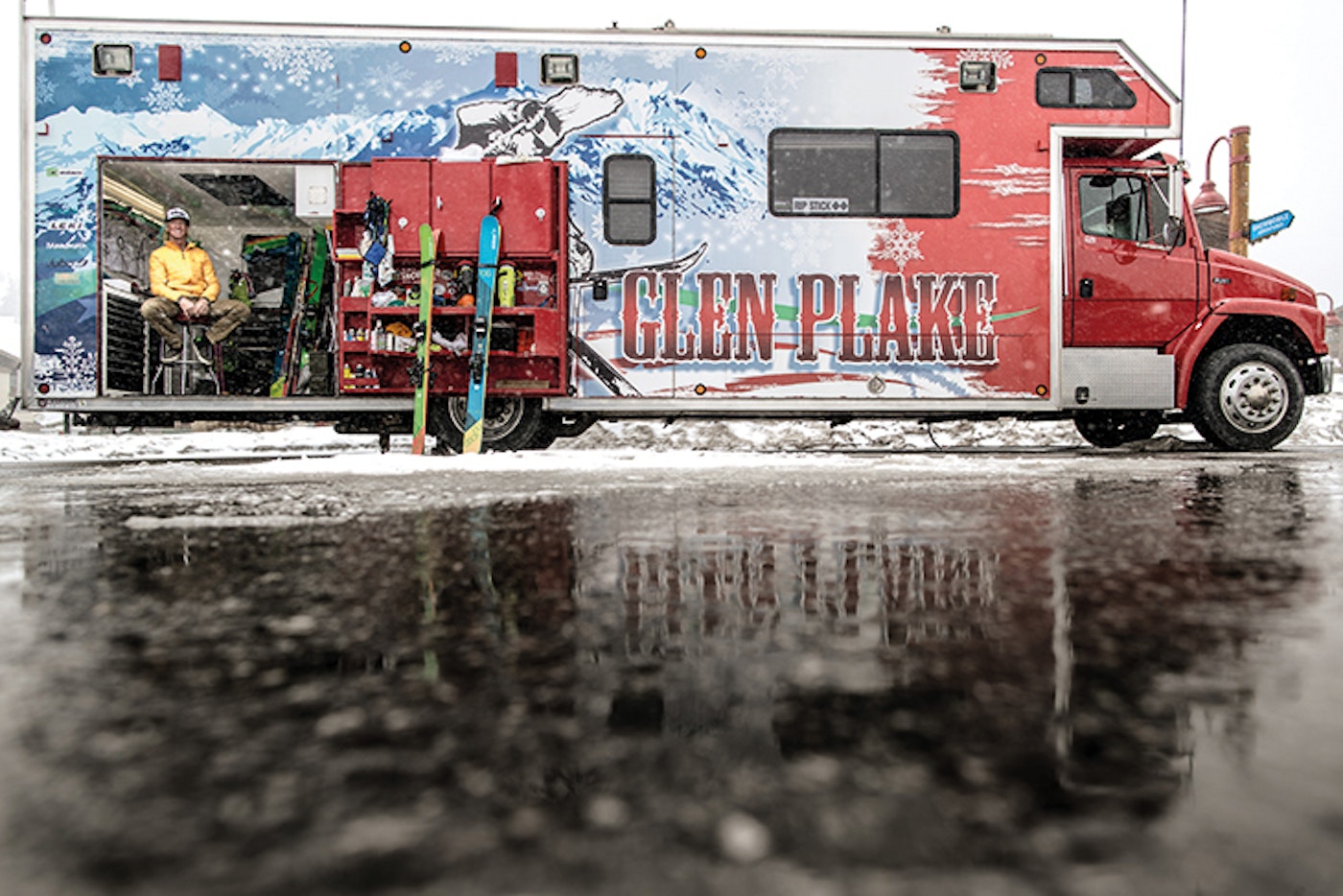
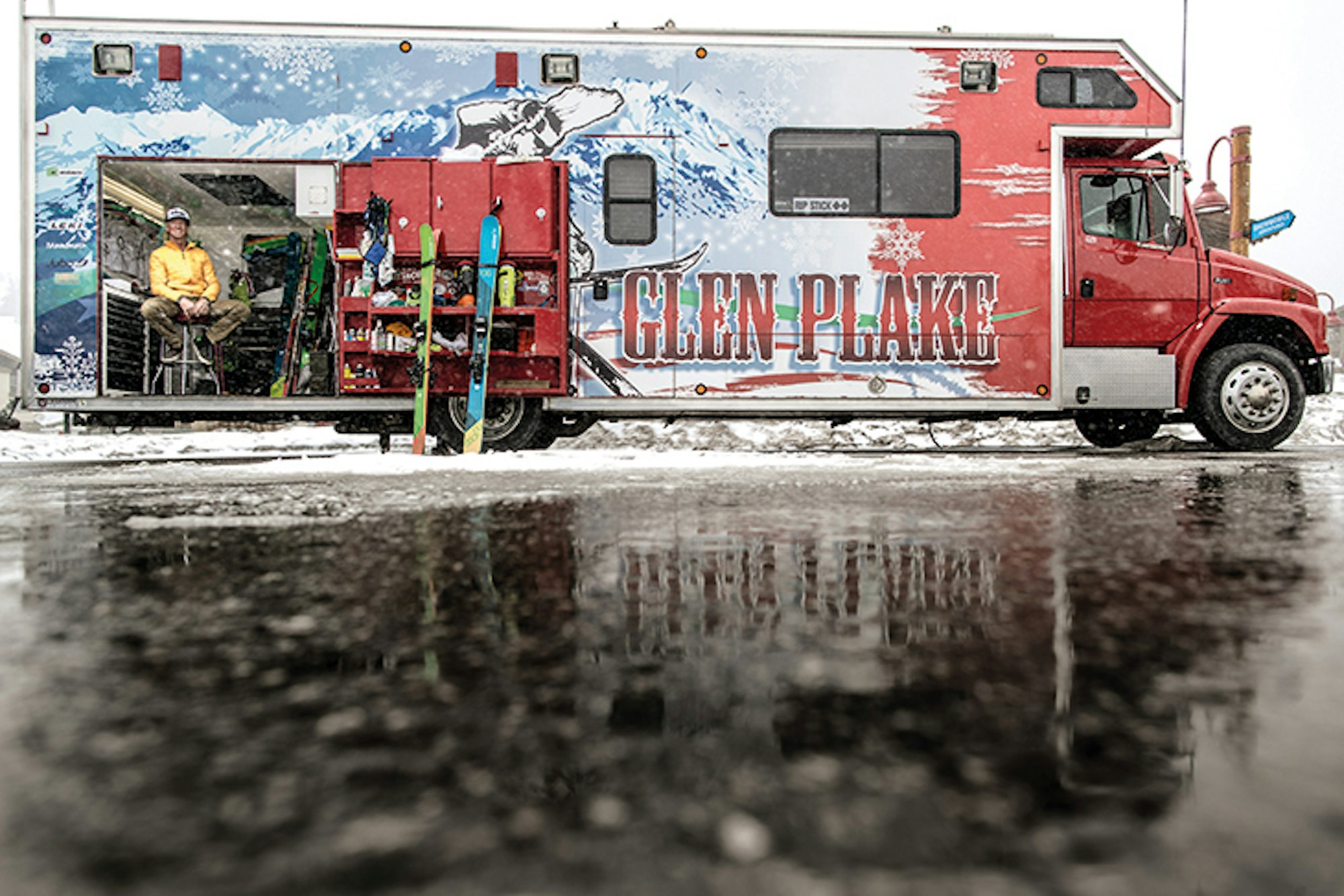


PLAKE: It was my honeymoon. We needed a big block of time to get that thing started and executed, so we [used] our honeymoon. About a week or two into it people were being informed of what we were doing and it became, quite honestly, one of the biggest promotions anyone had ever done in skiing. Sixty-eight days with 50 different ski areas in 33 different states, all east of the Rockies. We’ve had a half-a-dozen rigs over the years, but the first one was just a 24-foot bumper dragger—an old camp trailer.
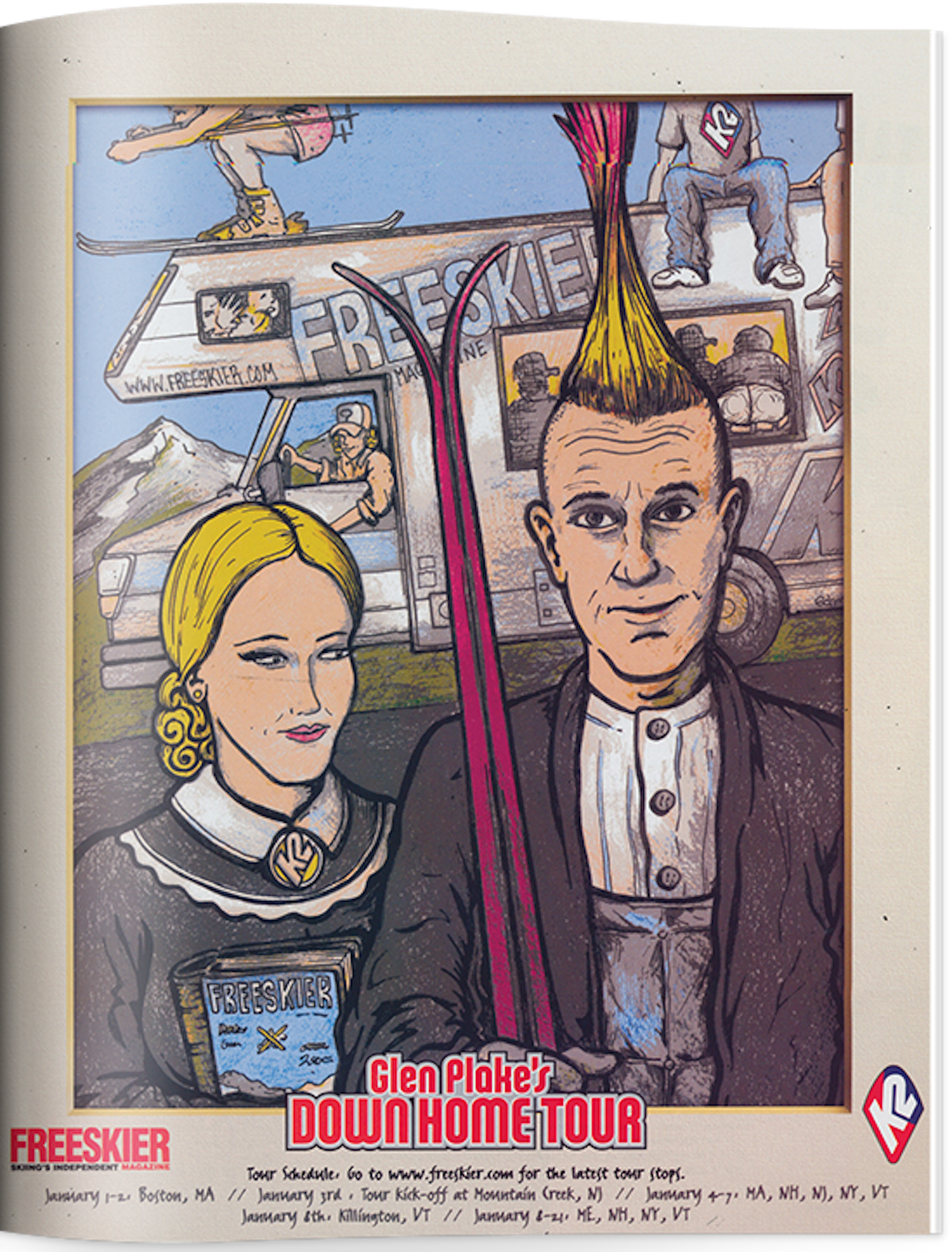
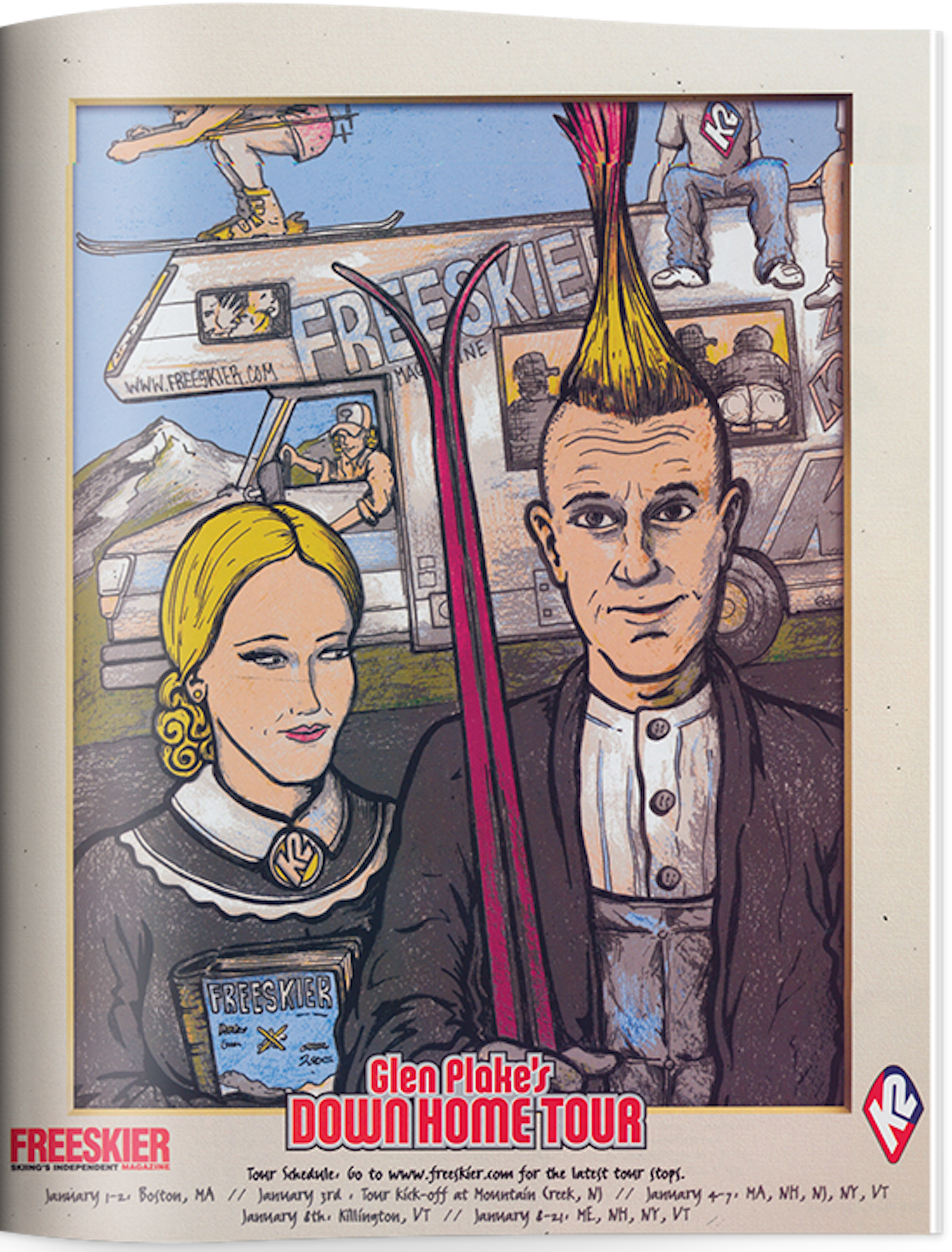
On one Down Home Tour with FREESKIER we used a rented motor home. It was pretty funny because we just had hideous snow conditions. It was an absolute disaster. We may have even canceled it for a month. In the long run it was a raving success, as they always are, no matter what they are. It’s just fun to go ski with everybody and try not to have an agenda. Everyone always wants to have an agenda, and the beauty of the Down Home Tour is not having one, and allowing the trip to flow whichever way it wants to go.


PLAKE: We’d show up, ski with everyone for the day, and the next day we’d throw an all-comers hot dog contest and give away a pair of skis. I kind of stole Wayne Wong’s idea: You had to do one “slow dog noodle” in the mogul section, and then it came down into the ballet section and you had to do one mandatory “Royal [Christie].” Other than that there were no rules. What’s the criteria? Best run wins. What’s the best run? I’d say, “I don’t know, I haven’t seen it yet!”
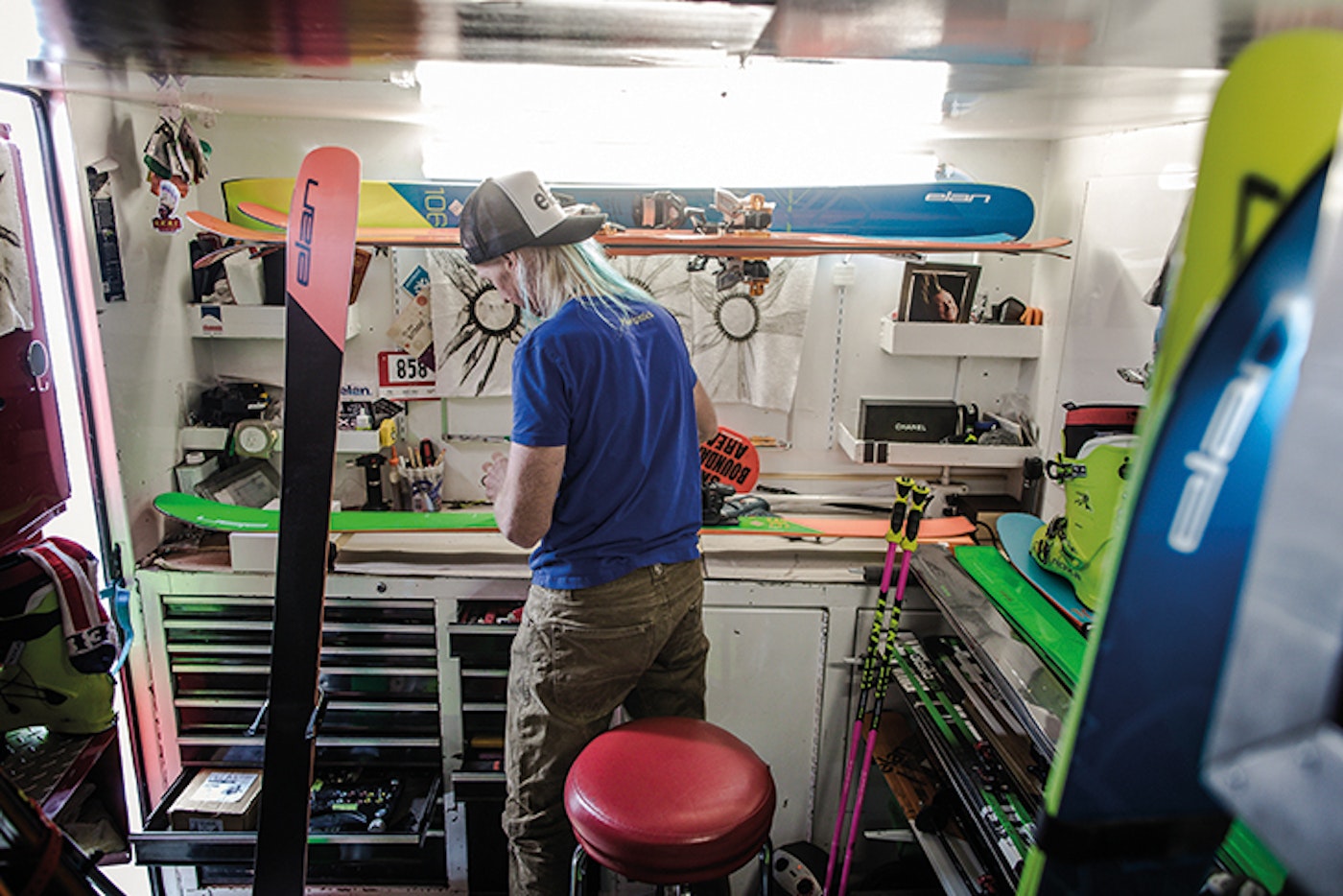
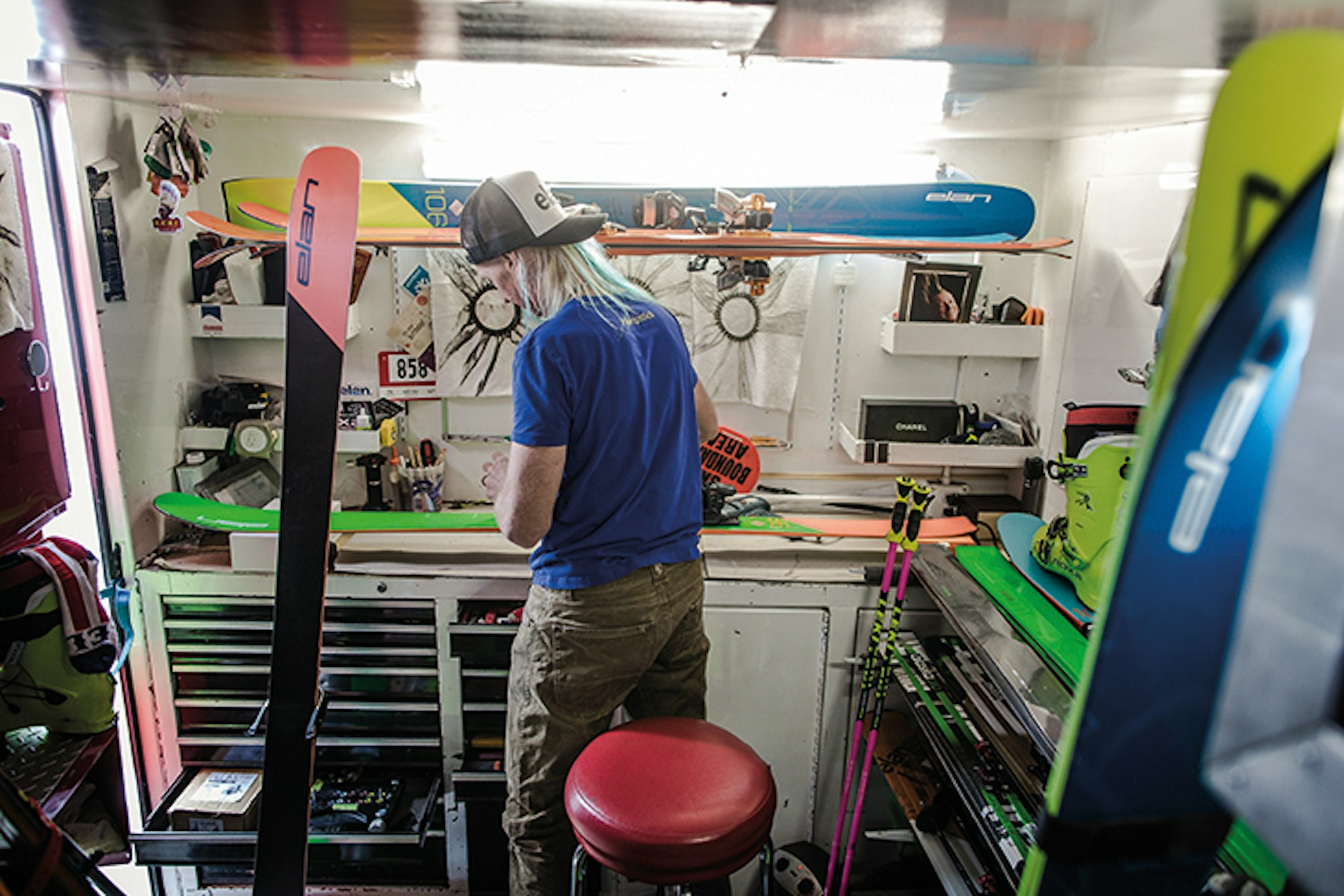
I’m proud to say, I look back at the list of people that ultimately had success at those contests, whether it was some guy that just went frickin’ crazy and had the most exciting run, or ultimately, I mean… Sage Cattabriga-Alosa’s first pair of skis that he ever got for free was a pair that I gave away at Grand Targhee because he won the Hot Dog Tour.


PLAKE: One of the craziest eras ever in skiing—and nobody knew it when it was happening—was that first generation of rail riders; it was frickin’ crazy. Still crazy. We watched Burger Time the other day. And it was great, because I was watching it with [U.S. Ski Team racers] Steve Nyman, Marco Sullivan, Stacey Cooke… you know a whole bunch of the speed team, and we’re like, “Oh, my gosh! Look at the crap they’re doing!” It was kind of funny to see how that came along and where it is now. It really goes back to the hot doggin’ side of things. You’ve heard my analogy of the links in a chain—just watching those links get added to the chain, it’s so cool. Watching the generations come up and go through their phases has been really fun. I’m glad to have been a part of it, and more appropriately I’m glad to still be a part of it.
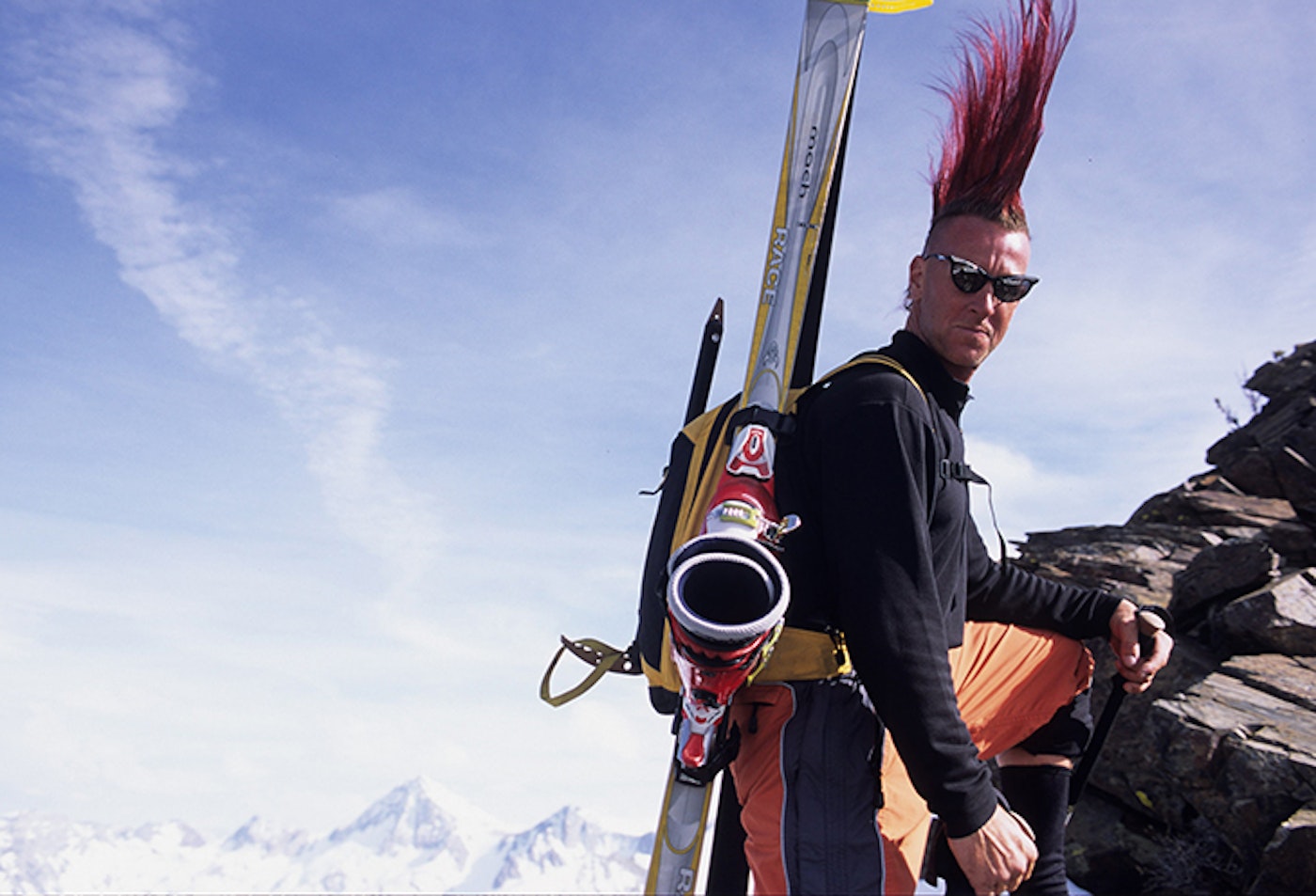
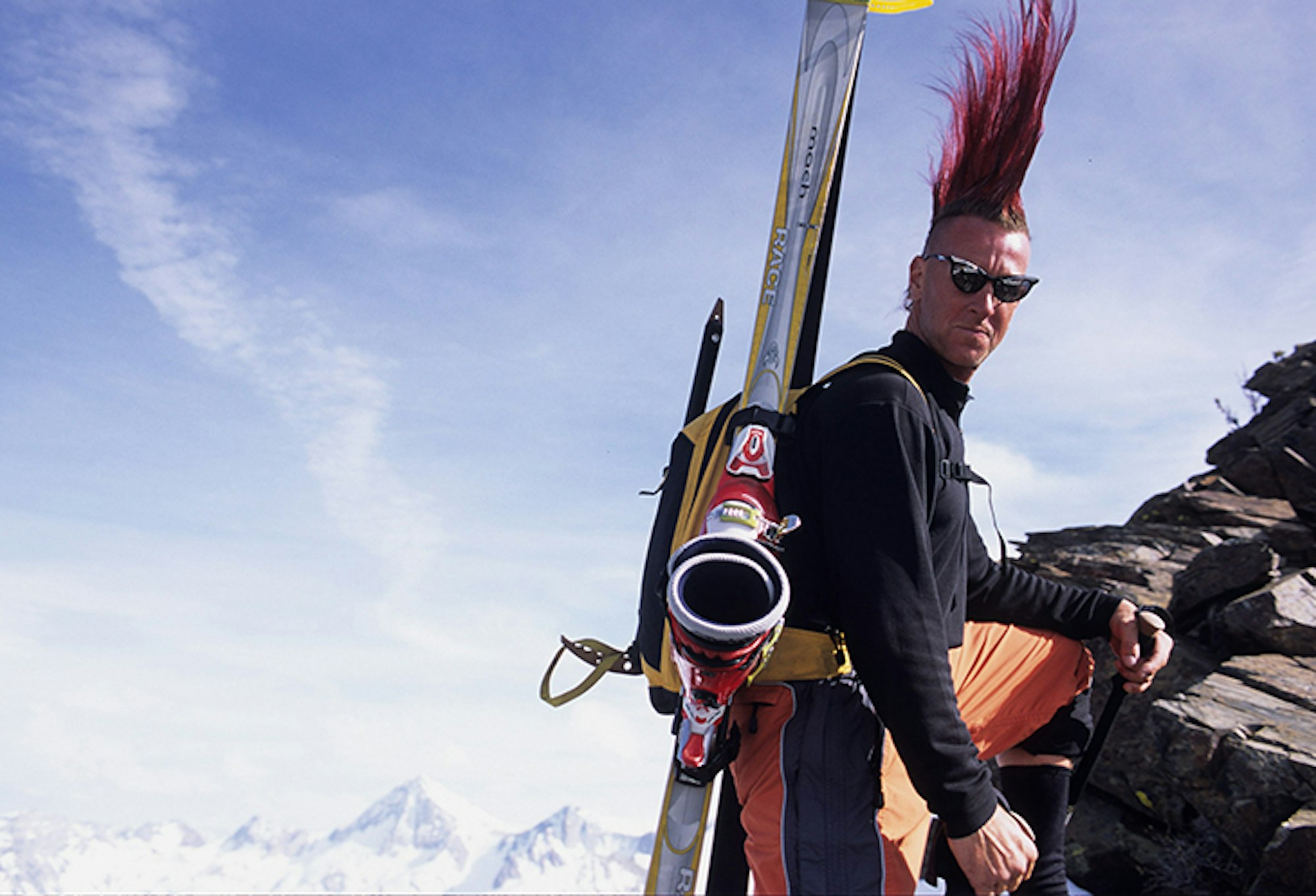


PLAKE: As weird as it may sound, I had a lot to do with designing Amphibio, the race carvers. Before the fat ski we all had that clapped out old pair of skis that we just loved so much. I was trying to figure out why those skis were so special. I was flexing an old pair I had here at the house and you could twist them in half. You’d flex the tail and the whole thing would make, like, a 360-degree arcing bend with a twist in it. I was just like, “Would it be possible to make a ski that would be torsionally unstable in the tip and the tail, so that it would actually roll away from you or roll into you depending on what the snow was doing under you?” And they all laughed at me.
We started by literally just sawing big slots in the edges and in the tails, and trying to create, not longitudinal flex, but twisting flex in and around the tail. It didn’t really work.
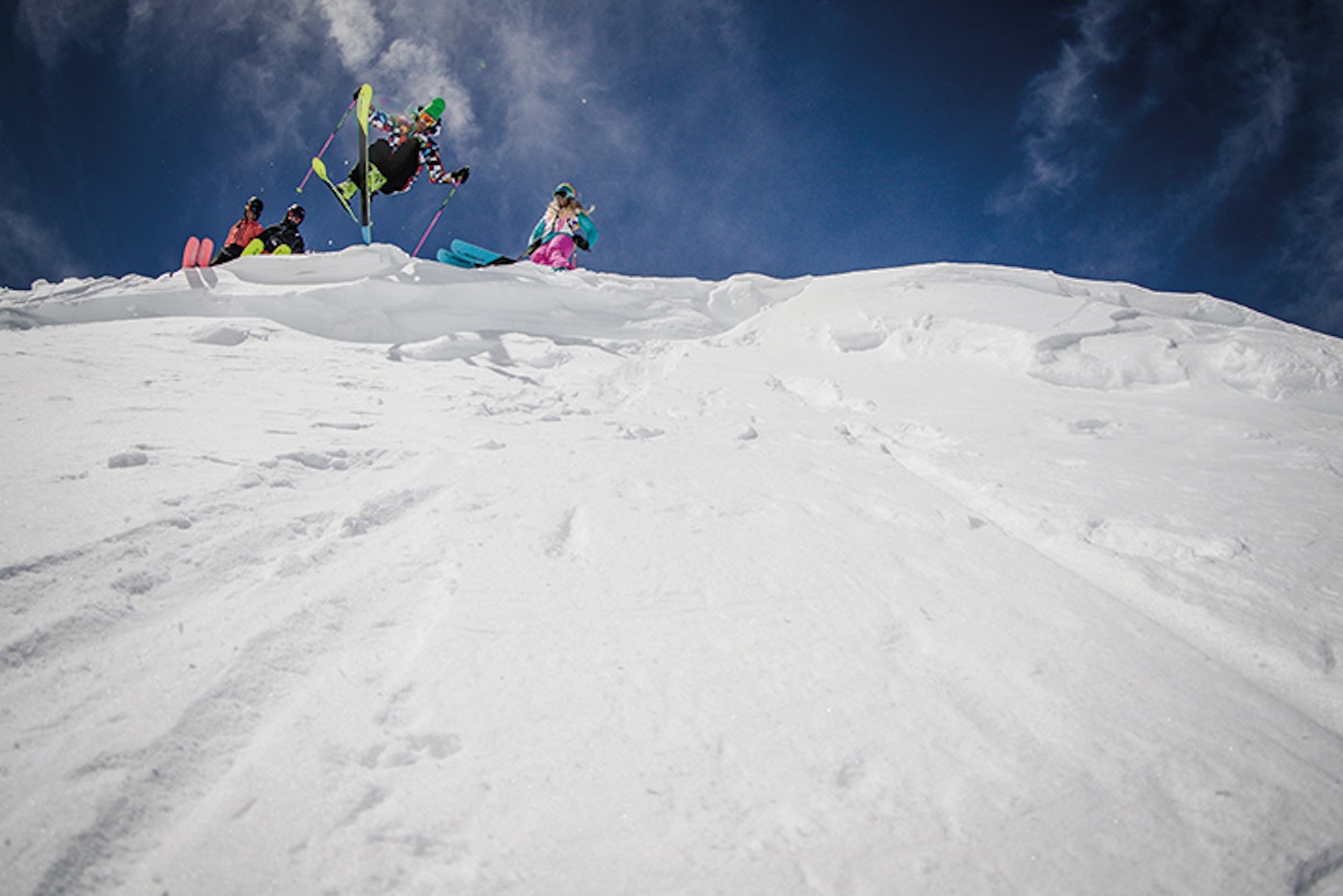
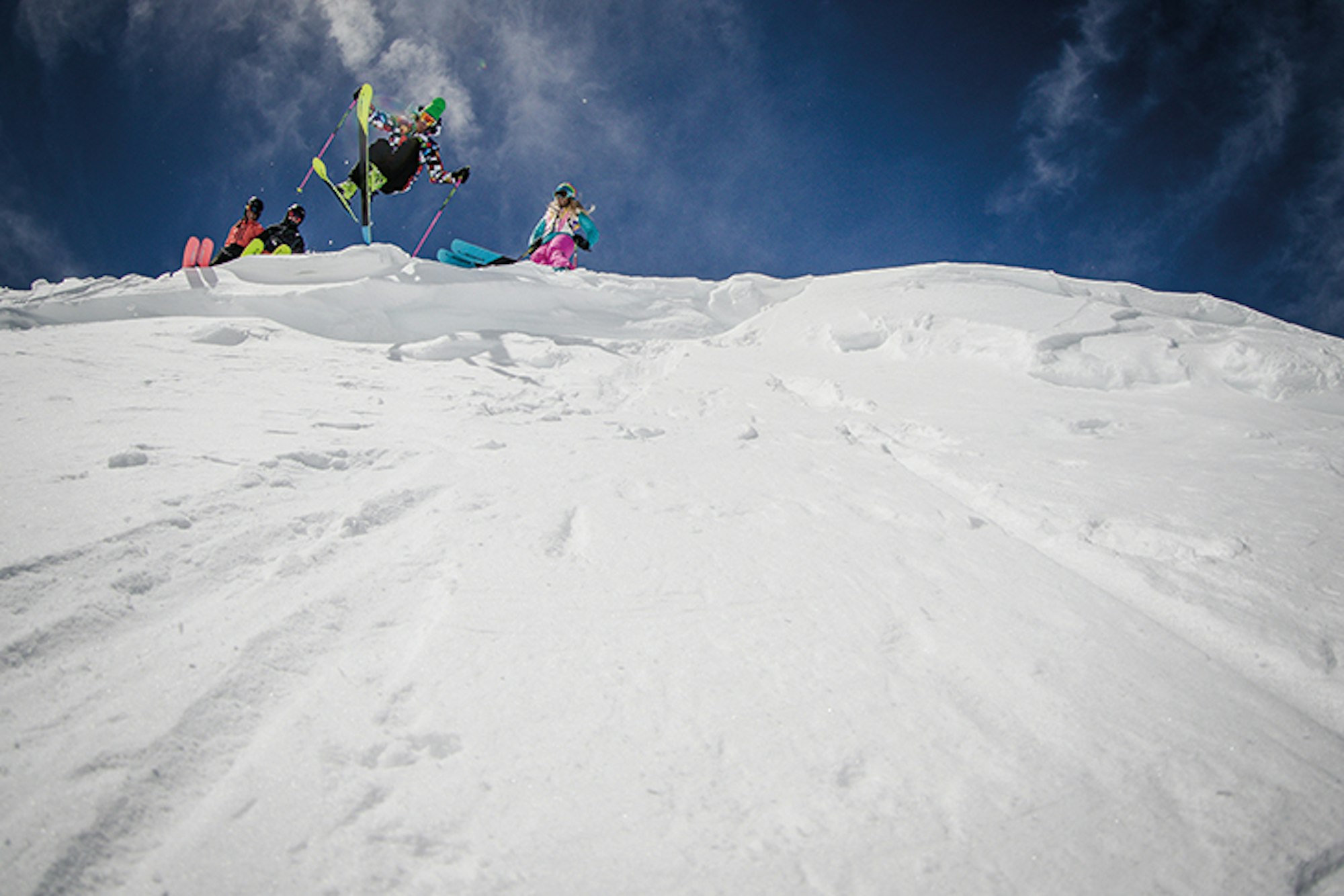
All of a sudden we were doing some testing and we started to feel something very unique in one of the pairs of skis, and obviously we gave it good marks. The next test, another pair of skis kind of pops up, and we gave it good marks. It wasn’t that they made the ski torsionally unstable, it was that they were twisting the skis. And that’s what Amphibio really is. It’s been explained terribly in many articles and tech manuals, but the reality is that the skis are twisted. The tips are twisted up on the outside and the tails are twisted up on the outside.
I was trying to do it for powder skiing, instead of rocker because rocker is great, but not all the time. We found out that it was really noticeable in hard pack. Like super noticeable. And so they chose to come out with the Amphibio carving series using that technology. And it was fantastic. So, I was involved in the design from the beginning, but it was not a ski design you would normally associate with me.
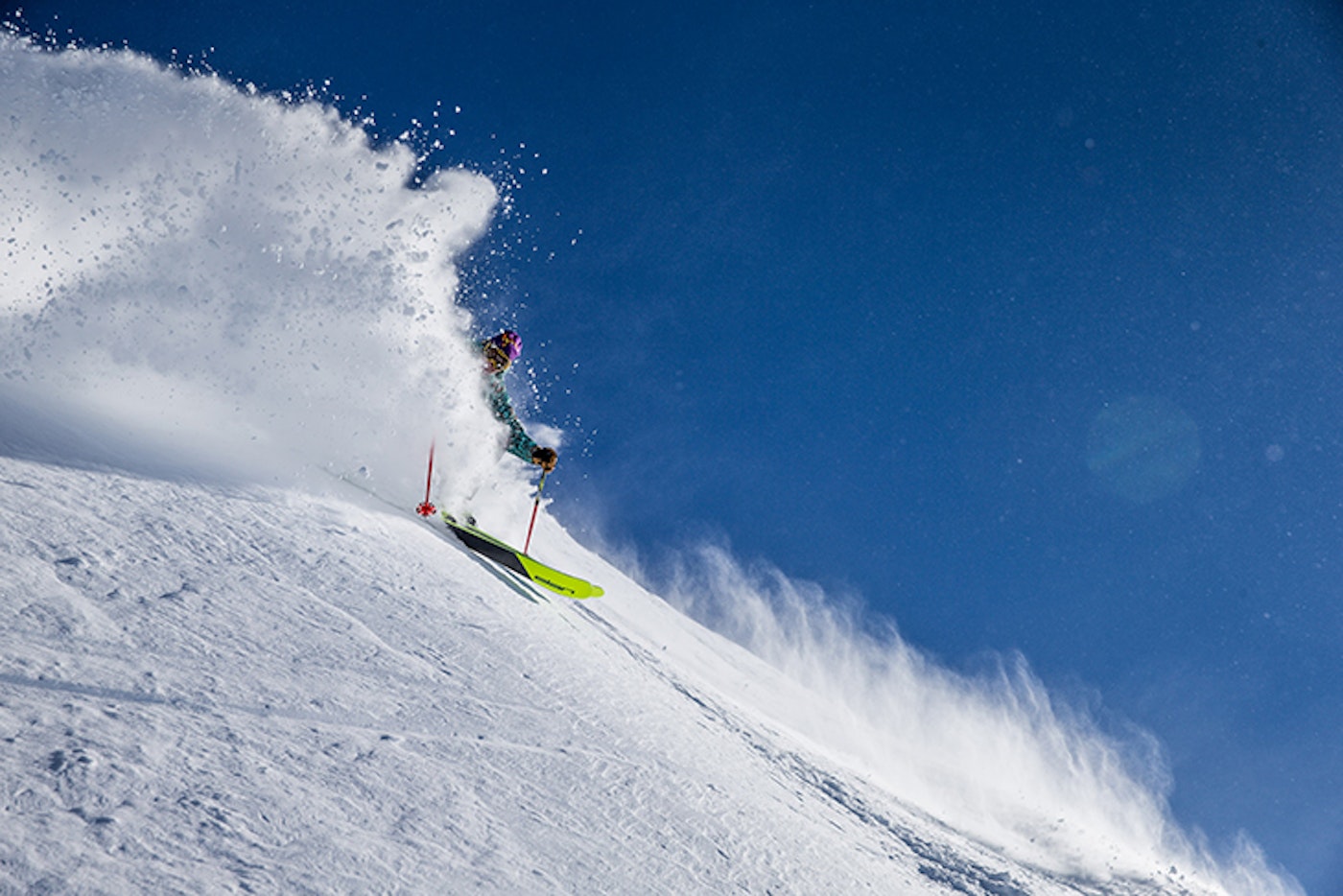
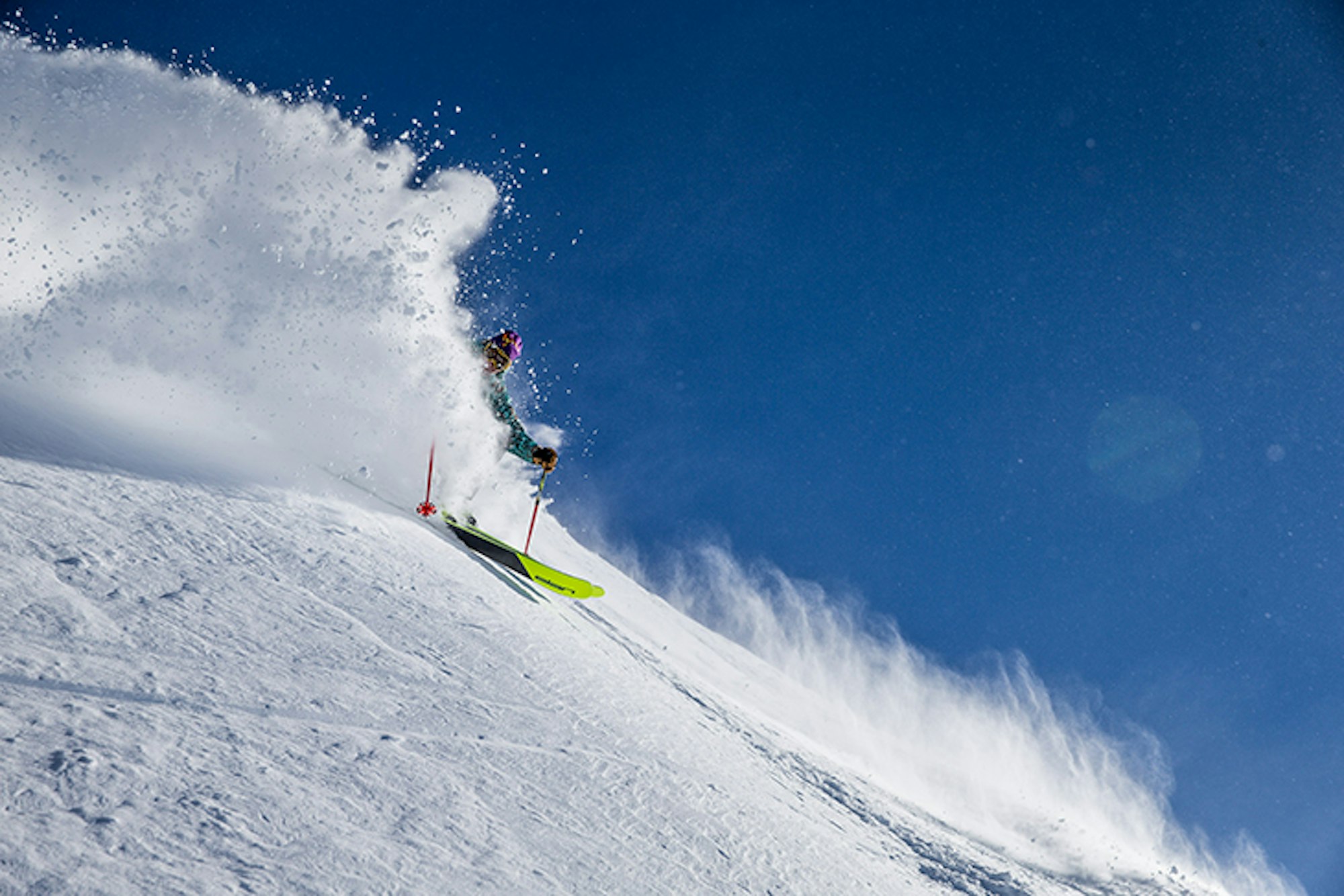


PLAKE: The story is well told that I went over to Chamonix for Blizzard of Aahhhs and didn’t really leave. So, I’ve always gone back and paid homage to my love for Chamonix. There was a time where we thought we were going to have kids, so we’d need to settle down somewhere and have access to grandparents… what-have-you. When that ultimately didn’t happen, it was like, alright, let’s get back to Europe.
I’m proud to say that I’m definitely a part of the Chamonix community. I’m included in projects in and around the valley that do not have a lot of foreigners involved, so to speak. It’s an honor to be integrated into that community, and I’d like to say respected in the community. I’m quite humbled, of course, in Chamonix, but at the same time it’s nice to be a part of it.
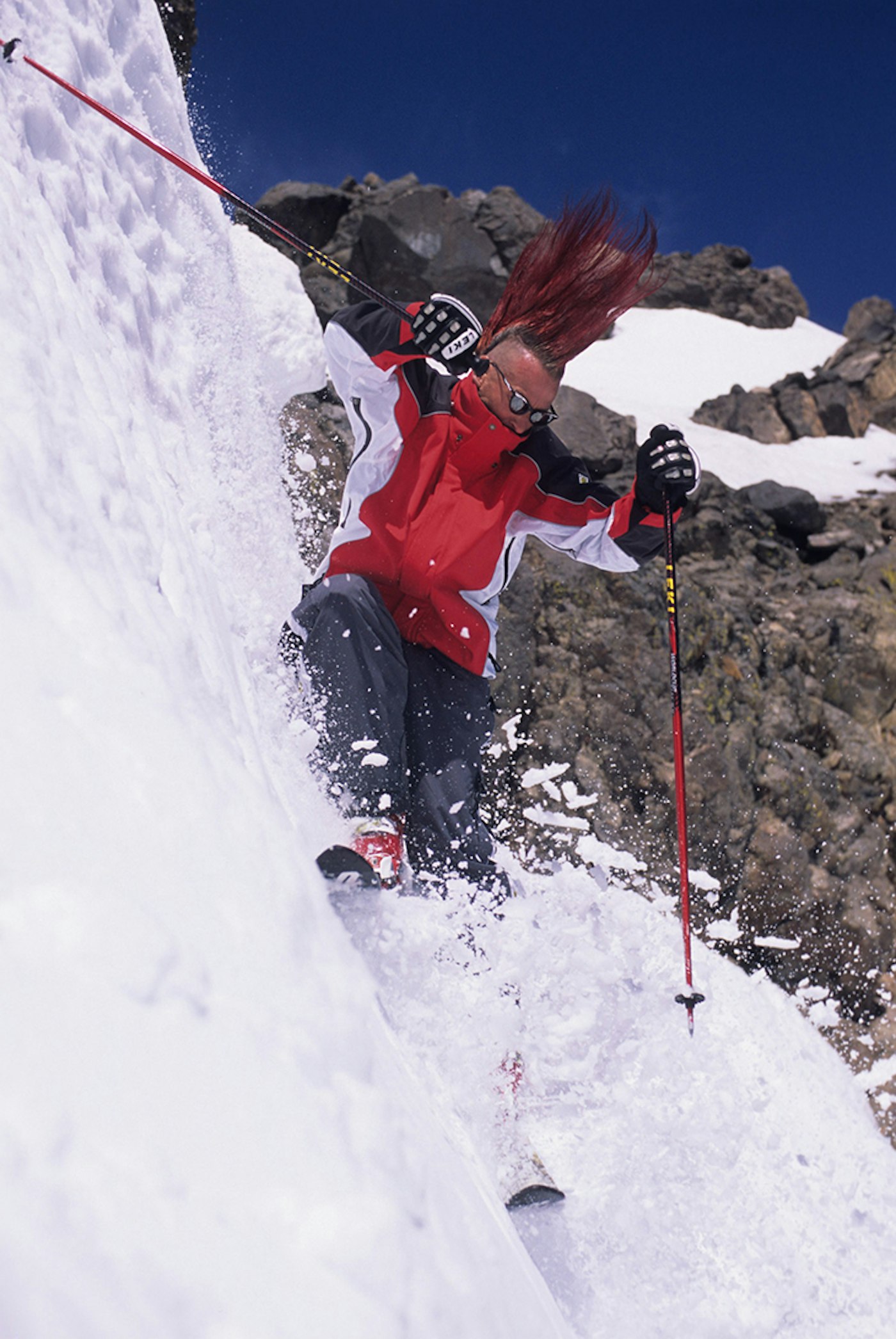
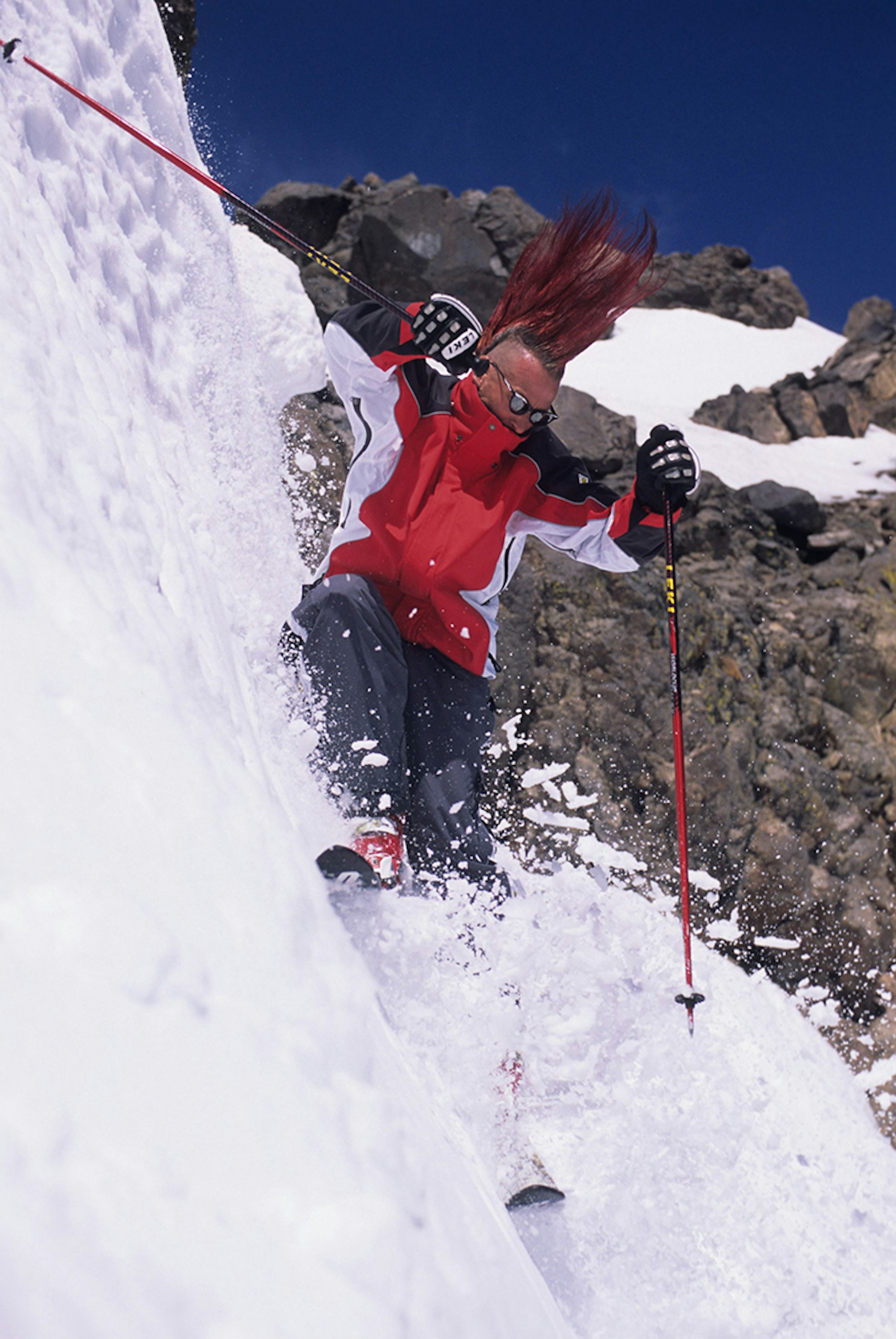
I have a great sense of peace in Chamonix knowing I can just go and enjoy whatever it is that I do. No matter what you’re doing, it’s kind of been done. It’s relaxing.


PLAKE: When I finally did open that letter, I said, “No, I don’t actually want to go in the Hall. There are too many people who are not in the Hall that need to be in way before I am. And then I went down the list: Bobby Burns, John Clendenin, Bob Salerno… the names just went on, these famous hot doggers that were not in the Hall. And the only reason they weren’t is because they were never on the U.S. Ski Team. I’m not taking away from anybody, but the Hall was turning into kind of the U.S.-Ski-Team-members-who-didn’t-quite-make-it resting home. My induction, I’m proud to say, broke some ice. Since then, Clendenin has gone in. Salerno has gone in. Bobby Burns, I think, is going in this year? He’s actually been nominated now, God forbid.
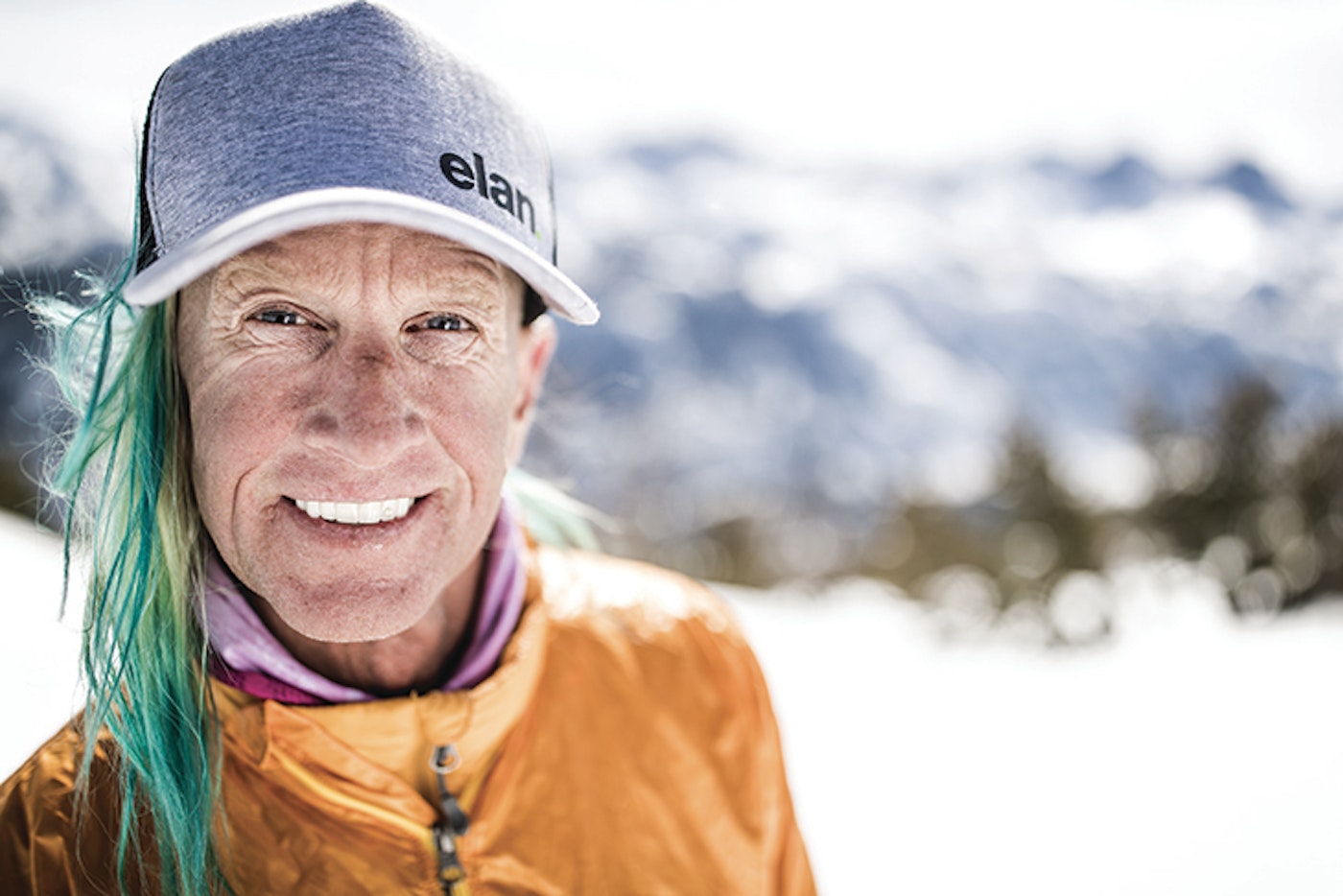
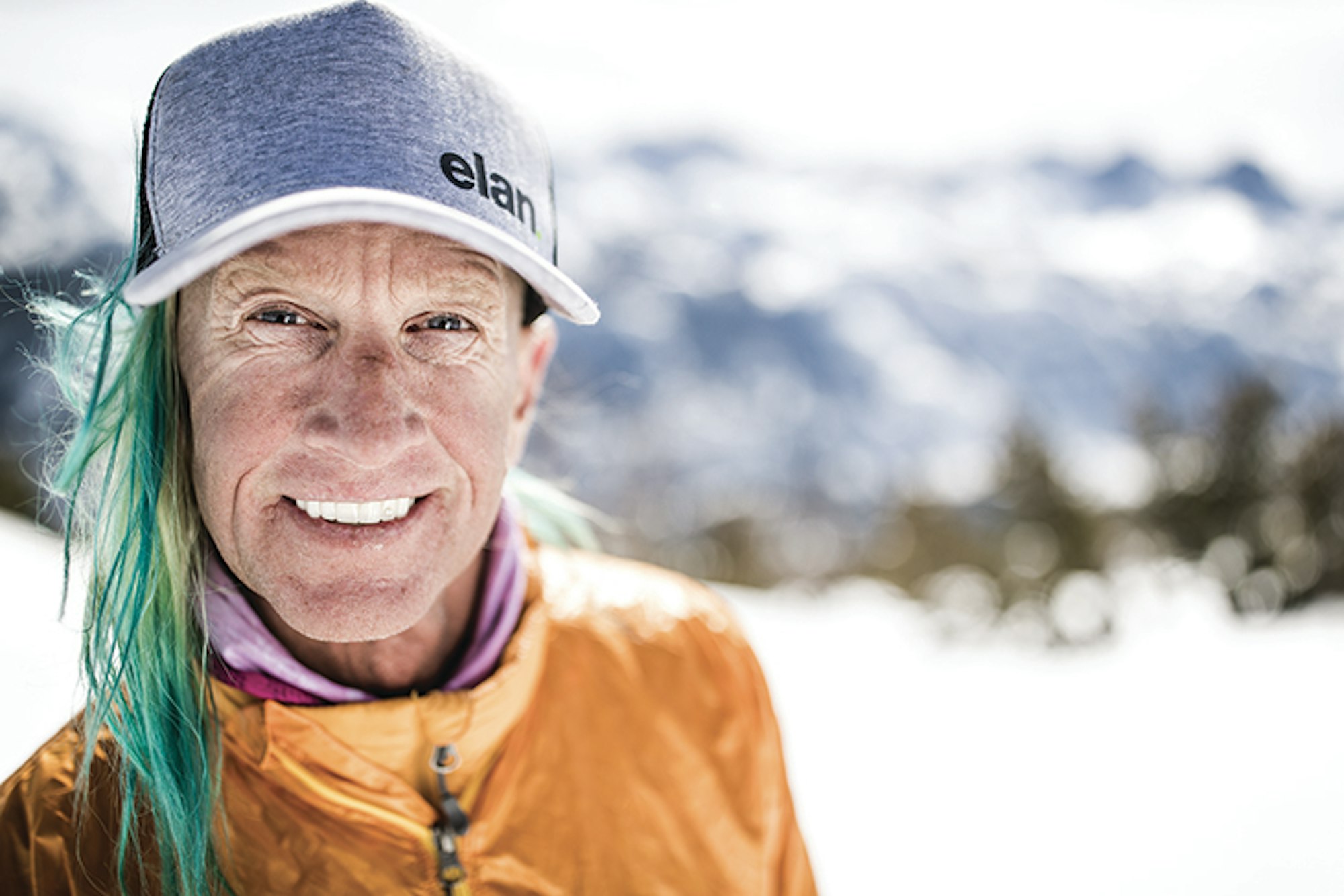
In my acceptance speech, I said, “You guys have opened up a can of worms, because by letting me in, these people that you considered the “freedoggers,” the outcasts of your industry, are about ready to go into this Hall. And there are more coming, because Tanner [Hall]’s coming in. I don’t care what you think, say, or want, he’s going in eventually.”


PLAKE: I just wanted a pair of skis that were fun to ski on. That sounds like a cliché, but that’s what I wanted. Fat skis do have a point. You can say whatever you want, but the reality is you need to make some skis around 100 mm underfoot that work well. We started playing with things to basically build a new wide-body ski for Elan that would be, in fact, really frickin’ bitchin’. And at the same time different than the others. You’re not going to enter that category building the same way everybody else does. I don’t care what our geometry is, what our flex is, it will not work.
With the Himalaya ski, we learned how to get rid of a lot of weight. Then we started to play with the idea of milling the cores, using paulownia wood and then doing something else to take care of the vibration problem that most skis have. We started using the carbon fiber tubes. Now, geometry is geometry. Some skis have better than others, but that’s mathematical. You can play around with that. Tip shape is whatever is in fashion. Colors are colors. But when we started playing with that paulownia core with carbon fiber tubes, we started having a sensation on the skis that no other ski had. And we also had a weight reduction that no other ski had.
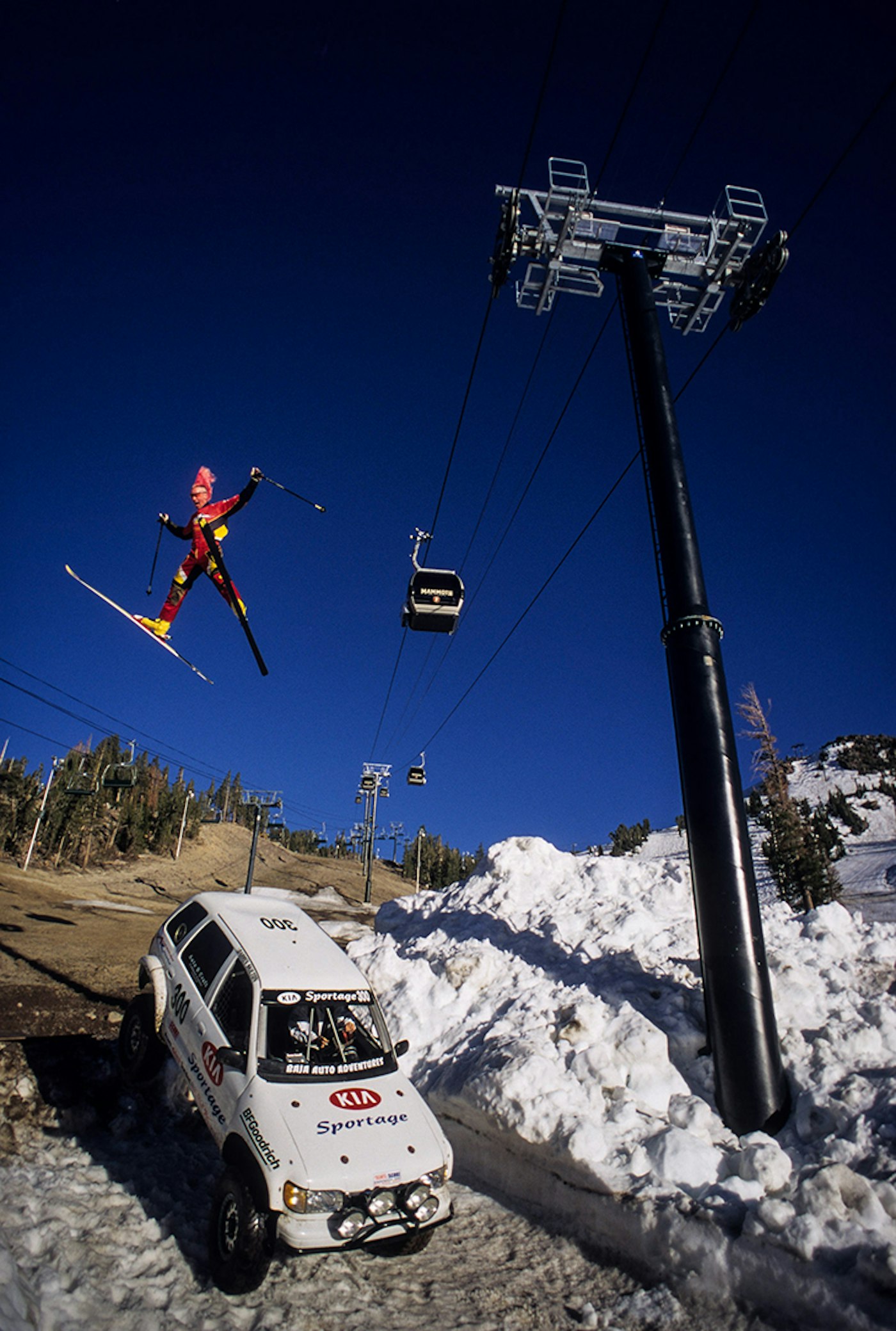
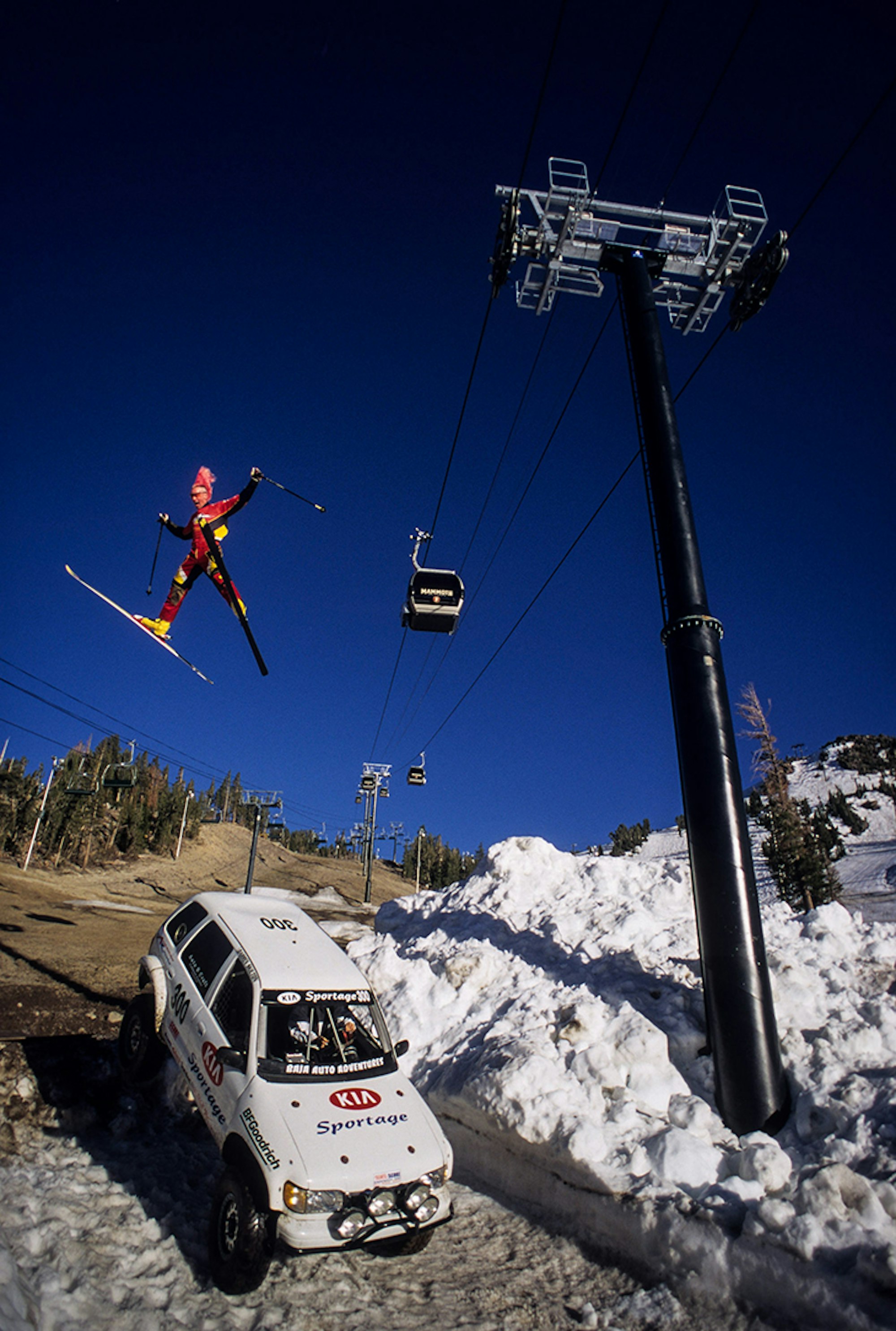
Ripstick was the North American name for a race carver that we made. So, when we were looking for a name for this new ski, three or four of us were like, “Why are we not using Ripstick?” They were going to name them after mountains in Alaska. Nope, call ’em Ripsticks. That’s what they’re gonna be.


PLAKE: Elan doesn’t realize it yet, but basically all I plan on doing this year is redesigning my new bump skis. The reason is, last year with Mammoth’s big, long season, they quit grooming, and there were moguls—I mean, literally, the cliché Volkswagen-size moguls all over the whole mountain. And I was skiing around on all the stuff we were kind of supposed to ski on, and I’m like, “What am I doing?” I walked into our ski locker and I grabbed my 200s and 204s, and we all started skiing long boards, just having a blast. And skiing 10 times better than we were on fat skis.
So check it out: Ripstick technology, but 80 mm underfoot. 195, maybe 200 cm length? One size, I’m only going to make one size.
Associated Gear:


Elan Ripstick 106
This slayer is designed with all- mountain, all-the-time shredding in mind. Emphasis on the shred. “The name of this ski is no joke,”said one tester. “One of the best mid-width carving skis I’ve been on. It has the perfect balance of a charger with a nice amount of play. Great for any conditions: groomers, crud and surfy pow.” Lending to that versatility is a cambered inside edge for stellar edge grip and a rockered outside edge for smeary good times and nimbleness. (This means you have a designated left and right ski.) The integration of two carbon tubes running the length of the ski translates to torsional strength and weight savings all at once. Furthermore, special composite inserts in the tip and tail cut down on vibration.
Additional Product Info:
Ski Lengths: 167, 174, 181, 188
Turn Radius: 18.1 @ 181
Ski Dimensions: 140-106-122

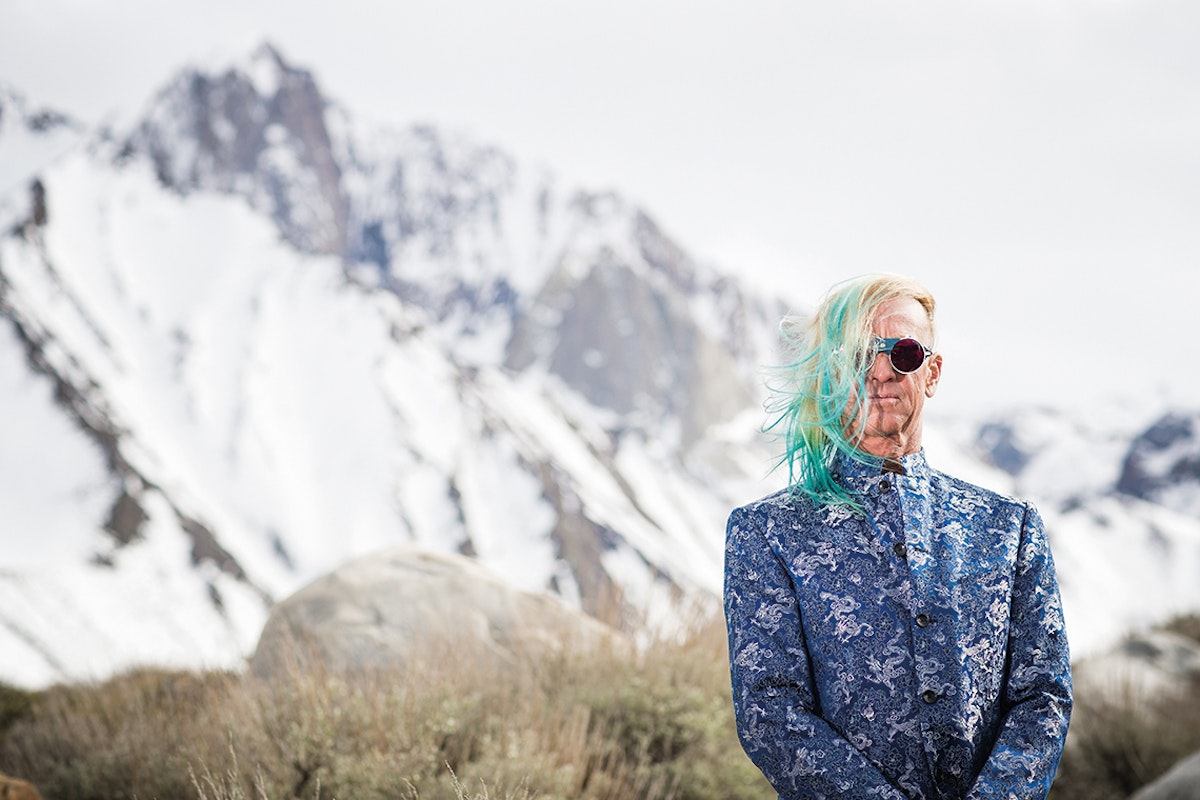
![[GIVEAWAY] Win a Head-to-Toe Ski Setup from IFSA](https://www.datocms-assets.com/163516/1765920344-ifsa.jpg?w=200&h=200&fit=crop)
![[GIVEAWAY] Win a Legendary Ski Trip with Icelantic's Road to the Rocks](https://www.datocms-assets.com/163516/1765233064-r2r26_freeskier_leaderboard1.jpg?w=200&h=200&fit=crop)

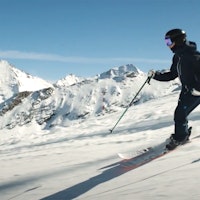
![[GIVEAWAY] Win a Legendary Ski Trip with Icelantic's Road to the Rocks](https://www.datocms-assets.com/163516/1765233064-r2r26_freeskier_leaderboard1.jpg?auto=format&w=400&h=300&fit=crop&crop=faces,entropy)




![[GIVEAWAY] Win a Head-to-Toe Ski Setup from IFSA](https://www.datocms-assets.com/163516/1765920344-ifsa.jpg?auto=format&w=400&h=300&fit=crop&crop=faces,entropy)


